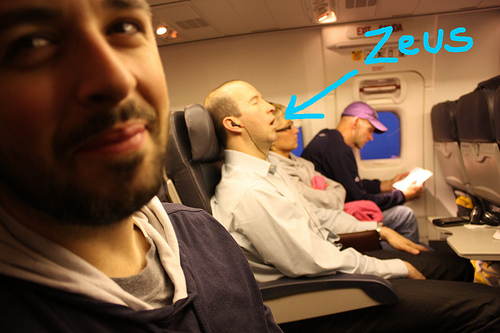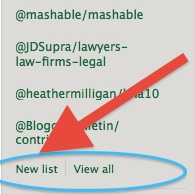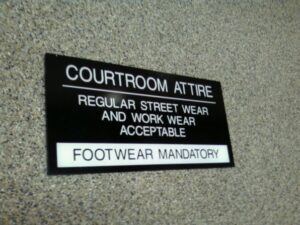Looking for a more productive airline seat—not a quiet one where you can work, read, nap, or catch up on email, but one that puts you face-to-face with the CEO of your law firm’s most coveted prospect? Welcome to Social Seating.
Some ideas are just meant to be born.
Imagine your dream prospect has just accepted your invitation to connect on LinkedIn. Over time you exchange a few inMails, but nothing really meaningful transpires to catch their attention. Then, as you are online booking a flight from New York to São Paulo an option appears on the screen inviting you to log on using your Facebook, LinkedIn, or Twitter account. You’re a bit adventurous, so you decide to check it out. Just to be “safe” you select to log in with LinkedIn – the business network. There beside your ticketing choices little avatars appear — squares with profile pictures in them. As you hover over one, basic profile information pops up. Fun. You scan some more avatars…no, no, wait. Can it be true? Is that Mr. (or Ms.) dream prospect? You run to the sink, splash cold water on your face and realize that you are not dreaming.
Back at the computer you find that he (or she) is seated in Row 6 Seat B. AND, much to your delight, seat 6A is available. You book it! Great. You’re all set up to spend some “quality face time” with your dream prospect—that is of course if he doesn’t change his seat to 10C beside that geeky looking guy who looks like he will sleep through the flight.
From a concept conceived in 2008 by Martín Varsavsky writing an article about airline affinity programs, social seating aims to make choosing your seat mates an interesting and social experience. Using social graphing—a graph that depicts personal relations of Internet users—social seating applications will suggest people with similar interests within your social networks (and beyond).
First launched by an international commercial airline in 2011, by early 2012 applications such as Facebook’s MHbuddy and SeatID were adopted by a handful of others, as well as by Ticketmaster (the music event ticket booking service) to socialize the seating experience, and add value.
How social seating works in a nutshell
For example, a passenger who books their KLM flight has from 90 days to 48 hours before departure to access the airline’s website and opt in to manage their booking, socially, through the Meet & Seat application running on SeatID. Within the application they can edit their profile and photo to display only the information they wish to provide to other passengers who have opted in to social seating on the particular flight. (You can opt out of social seating on any future booking at any time.) (See video clip at the bottom of this post for a more complete demonstration of how social seating works.)
As best I can tell from my research on the various social seating applications, most use your social network Settings (privacy settings) to define who will be able to see you. This is controlled within the social network, not the application. So for example, if your Facebook visibility is set to “Friends of Friends,” your social seating visibility will be the same. Only friends of friends will see you, but, for anyone opting in whose visibility is set to “Everyone” and that matches something in the social graph they will be visible to you. Facebook’s MHbuddy also tells passengers if any of their Facebook friends are planning on traveling to the destination (on a different flight) in case they want to meet during the trip. Aerosvit Airlines social seating solution, also developed by SeatID, allows passengers who opt in to see who else would be on different flights before they actually chose a flight and a seat. (Again, limited by a users’ network privacy settings.)
Airlines are hoping that serious business social networkers will find social seating a value add, especially on long haul trips. They also see it as a way to provide a more personal experience to their customers. Once a passenger has released their social networking data to the airline via these systems the airline has access to information such as upcoming birthdays or anniversaries that can be used to create a special experience. (All social seating apps that I’ve looked at have explicit terms of use conditions that preclude shared information from being used by other passengers or third parties. Good luck with that!)
The future for social seating
It is expected that other industries that provide seating will soon join the fun—trains, resorts, sporting events, and so forth. Ticketmaster already allows users to tag where they are sitting at events and share that information with their Facebook friends so they can pick seats close to where they are sitting. Last year they also added a new app which can recommend nearby concerts based on what artists a user listens to on services such as Spotify and Rdio.
Meanwhile, like everything new and digital there are risks. The most important thing you can do is to check ALL your social network settings frequently. Next, it should go without saying but I’ll say it again, be careful about what you publish on the Internet no matter what applications you use. Everyone has their own comfort level when it comes to sharing on the Internet. In many cases they are generational and peer driven. The under 30 crowd has a much lower threshold (few or no filters for what they post) than say someone who at 40 has built a career and a reputation that depends on a certain degree of decorum and privacy. Further, there is always someone, somewhere with evil intent. I’d say anyone using social seating should be armed with thorough understanding of the application, its settings, and its conditions and terms to avoid being extra vulnerable.
PS: As of “press” time here on the VMO, rumor of any domestic airlines introducing social seating is unconfirmed. Among those airlines mentioned in a number of earlier articles on this topic of social seating are Jet Blue and American.
You can join my network on LinkedIn and drop a note that you read this post. I’ll see you in the clouds – literally!






